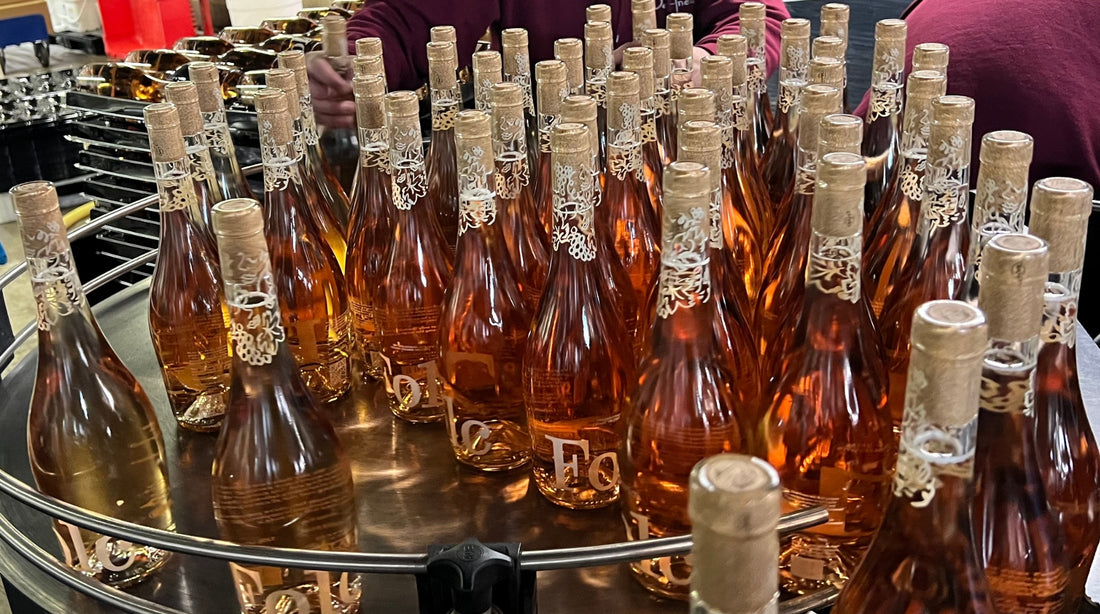
How is rose wine made?
Is making rosé wine as simple as mixing a bottle of white wine and red wine together? The short answer is no, and please don’t try this at home as you will be utterly disappointed with nothing but a jug full of less than appealing wine (trust us, we tried this for TikTok and failed)
You may be onto something though, as rosé wine can be made from a mix of white wine grape varieties and red wine grape varieties in certain winemaking regions, including England, using a process called ‘blending’, and that’s exactly how we produce folc.

Now this is very different to the ‘pour both in a jug and hope for the best’ method above and is perfected through rigorous quality controls once the white wine and red wine have fermented separately in tank and possibly undergone secondary winemaking processes.
Each wine will have its own flavour profile, aroma, sugar level, alcohol level and acidity and the winemakers will test many different blends to create a harmonious rosé, without any particular wine overpowering another so that the end result maintains fresh aromatics, with a flavour palate that layers distinct but complementary flavours together, together with the preferred level of acidity, residual sugar and alcohol.
If this is all getting a bit technical, think of baking a cake. Too much butter and it’ll be crispy, not enough egg and it’ll be crumbly, no baking powder and it’ll be flat. Each component of a wine blend has a role to play and although you may have a lead character (for rosé this tends to be Pinot Noir), your supporting actors can make the show.

Putting the analogies to one side, other ways of making a rosé wine are used by many wine making countries and are sometimes preferred due to the style of wine made.
‘Short maceration’ and ‘direct pressing’ are wine making methods that start with a grape variety being pressed after harvest which releases the grape juice from the grape. The main difference between these techniques is that short maceration leaves the grape juice to soak in the skins of the grapes anywhere between a matter of a few hours to 48 hours, depending on what flavour intensity and colour the winemaker is after.
The last method is called the ‘bleeding method’ or if you really want to show off, the ‘saignée method’, which is often used when making a red wine. Red wine grape varieties will be pressed, and the resulting juice will be left to soak in their skins as if making a red wine. After a period of time however, an amount of grape juice will be ‘bled’ off, which then ferments separately without its skins, and is used to make a bolder, punchier rosé with the rest sitting tight and made into a red wine.

As you can probably tell if you’ve reached this point, rosé wine is far from simple, and regardless of the way in which it is made, is a true expression of the quality of not only the grapes used, but also the creative wine making and storage techniques. If you want to hear more from folc’s very own winemakers, have a read of our interviews with Poppy Seeley and Nick Lane.
